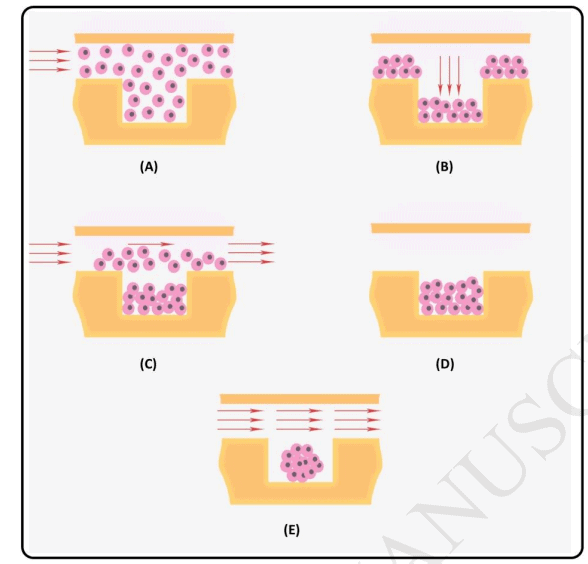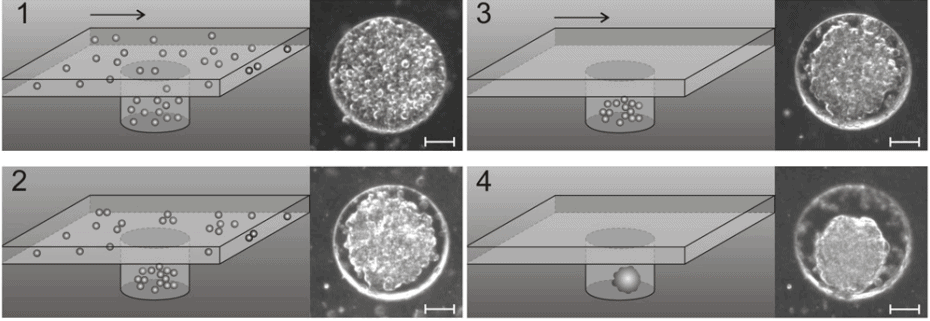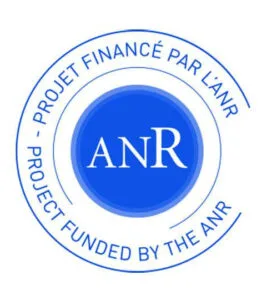Speroid Cell Culture Microfluidic Platform
Plug-and-play pack for automated scaffold-free 3D cell culture technique
Multiple parallel culture of spheroids
Depending on the chip, more than 20 spheroid can be cultivated
More physiologically relevant model
Dynamic perfusion better mimics real conditions than static culture
Automated spheroid perfusion
Perfuse spheroids for several days with automated sequences

Need a microfluidic SME partner for your Horizon Europe project?
Breast cancer cell spheroid, SEM picture Dr Khuloud T. Al-Jamal (CC BY 4.0)
A microfluidic beginner instrument pack for spheroid cell culture
Spheroids are sphere-shaped cell cultures in a 3D scaffold that let cells proliferate and migrate inside the scaffold to reproduce cell configuration inside the human body. Drugs can be tested using this model without animals and with better mimicking of cell morphology, physiology, and organization compared with 2D cell culture inside Petri dishes.
Spheroids can be perfused with microfluidic instruments to obtain better reproducibility, continuous physiological shear stress, long automated culture experiments, use of costly fluids, and better control of parameters like pH or temperature, making it the most efficient method to culture spheroids.
We assembled a beginner-friendly pack with high-precision microfluidic instruments, including a flow controller with flow sensors for continuous flow rate control that you can combine with your homemade microfluidic chip or a commercially available one.
Microfluidic spheroid cell culture setup
We assembled a microfluidic platform to perfuse and induce spheroid growth with perfectly well-controlled parameters. This plug-and-play pack is perfectly suited for researchers who want to transition from batch static culture to microfluidic dynamic cell culture for single spheroid observation, for example.
This beginner-friendly microfluidic pack for spheroid culture, observation, and screening is combined with the flexible Elveflow software for sequence setting and automation, allowing improved reproducibility and sample use optimization.
An accurate flow controller provides a totally pulseless and fast response flow control coupled with flow rate sensors (Galileo). Pressure-driven systems are the most stable and precise microfluidic solutions on the market, especially in comparison to syringes and peristaltic pumps. This is especially important to perfectly control the applied shear stress on the cells to better mimic in vivo conditions.
For long-term experiments like spheroid culture in microfluidic chips, recirculation of the medium is needed to maintain a constant, sufficient shear stress applied to the cells without using large quantities of expensive medium. Several methods exist to perform recirculation; a recirculation bridge or active valves can be used.
A sequential injection valve can also be added to inject different media and drugs. A commercialized dedicated microfluidic chip for spheroids can also be included.
The spheroid cell culture pack is highly customizable and can include several instruments to form the following platform. Each instrument is compatible with the others, piloted by the same software, and has a dedicated user guide for beginner-friendly step-by-step setup.

The spheroid cell culture pack contains:
Flow sensor (Galileo, MIC)
Software (Galileo user interface)
Recirculation bridge
Sequential injection valve
Flow controller
Fittings, tubings & luers
Reservoirs
Microfluidic chip for spheroid cell culture
User guides for instruments
Spheroid microfluidic cell culture principle
Spheroid, as three-dimensional cell structure, better reproduce cell-to-cell interactions than monolayer cultured cells and generally mimick in vivo environment more closely [1]. Spheroids are considered to be the best tumor cellular models [2] but can also be used as models for neurodegenerative diseases [3].

It has been shown that using microfluidics for spheroid cell culture is a great tool to test drugs with better accuracy, throughput, and microphysiological in vitro tests while reducing the need for animal models [5].
The other advantages include the possibility to culture spheroids with different sizes, decrease experiment costs and energy consumption, continuous and controlled physiological shear stress, and the possibility to observe a single spheroid at a time [6-7]. Microfluidic spheroid platforms have been successfully used for drug screening using different chip designs [8-10].

References
Astashkina, Anna, Brenda Mann, and David W. Grainger. “A critical evaluation of in vitro cell culture models for high-throughput drug screening and toxicity.” Pharmacology & therapeutics 134.1 (2012): 82-106.
Friedrich, Juergen, Reinhard Ebner, and Leoni A. Kunz-Schughart. “Experimental anti-tumor therapy in 3-D: spheroids–old hat or new challenge?.” International journal of radiation biology 83.11-12 (2007): 849-871.
Słońska, Anna, and Joanna Cymerys. “Application of three-dimensional neuronal cell cultures in the studies of mechanisms of neurodegenerative diseases.” Postepy Higieny i Medycyny Doswiadczalnej (Online) 71 (2017): 510-519.
Moshksayan, Khashayar, et al. “Spheroids-on-a-chip: Recent advances and design considerations in microfluidic platforms for spheroid formation and culture.” Sensors and Actuators B: Chemical 263 (2018): 151-176.
Petreus, T., Cadogan, E., Hughes, G. et al. Tumour-on-chip microfluidic platform for assessment of drug pharmacokinetics and treatment response. Commun Biol 4, 1001 (2021).
Kim, Jong Bin. “Three-dimensional tissue culture models in cancer biology.” Seminars in cancer biology. Vol. 15. No. 5. Academic Press, 2005.
Karina Ziółkowska; Agnieszka Stelmachowska; Radosław Kwapiszewski; Michał Chudy; Artur Dybko; Zbigniew Brzózka (2013). Long-term three-dimensional cell culture and anticancer drug activity evaluation in a microfluidic chip. , 40(1),
Kwapiszewska, K., et al. “A microfluidic-based platform for tumour spheroid cell culture, monitoring and drug screening.” Lab on a Chip 14.12 (2014): 2096-2104.
Lim, Wanyoung, and Sungsu Park. “A microfluidic spheroid culture device with a concentration gradient generator for high-throughput screening of drug efficacy.” Molecules 23.12 (2018): 3355.
Patra, Bishnubrata, et al. “Drug testing and flow cytometry analysis on a large number of uniform sized tumor spheroids using a microfluidic device.” Scientific reports 6.1 (2016): 1-12.
Pampaloni, Francesco, Nariman Ansari, and Ernst HK Stelzer. “High-resolution deep imaging of live cellular spheroids with light-sheet-based fluorescence microscopy.” Cell and tissue research 352.1 (2013): 161-177.
Why use microfluidics for spheroid cell culture?
Culturing spheroids in microfluidics brings critical advantages in comparison to classical methods:
- Decrease experiment costs by reducing the amount of reagent.
- Physiological shear stress is applied to the spheroid.
- A single spheroid can be cultivated and observed.
- Even long experiments can be easily automated and don’t require human intervention.
- Improved oxygen and nutrition supply for cells.
- Better reproducibility and uniformity.
- Easily inject precise volumes of different drugs or compounds.
These advantages make microfluidics the best solution to perform spheroid culture and drug screening. Furthermore, our instruments are especially well suited for this application because they are stable, user-friendly, and accurate and provide the best flow control on the market overall.

References
Karina Ziółkowska; Agnieszka Stelmachowska; Radosław Kwapiszewski; Michał Chudy; Artur Dybko; Zbigniew Brzózka (2013). Long-term three-dimensional cell culture and anticancer drug activity evaluation in a microfluidic chip, 40(1).
Customize your spheroid cell culture pack
Several commercialized and laboratory made microfluidic chips have been developed and tested to perform spheroid cell culture. We can include one of them with different surface modifications.

This pack can be customized depending on your specific needs. Microfluidic chips are transparent and can be easily combined with microscopy to observe the growth of the spheroids.
This pack can be personalized to cultivate different sorts of spheroids. Our experts will help you determine your needs depending on your application and provide continuous and full customer support to fulfill your experiment goals.
Contact our experts to answer any questions about this spheroid cell culture pack and how it can match your specifications!


